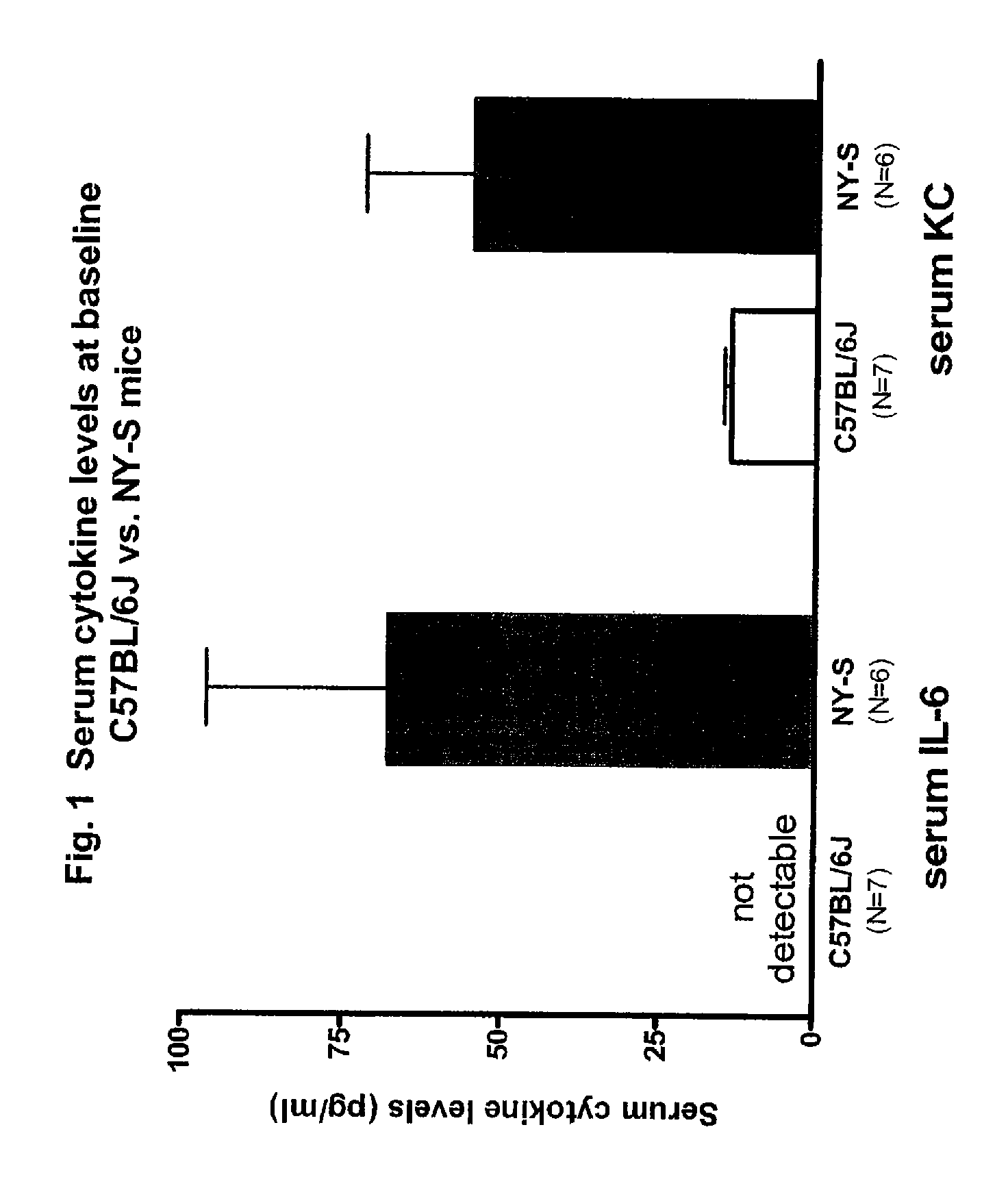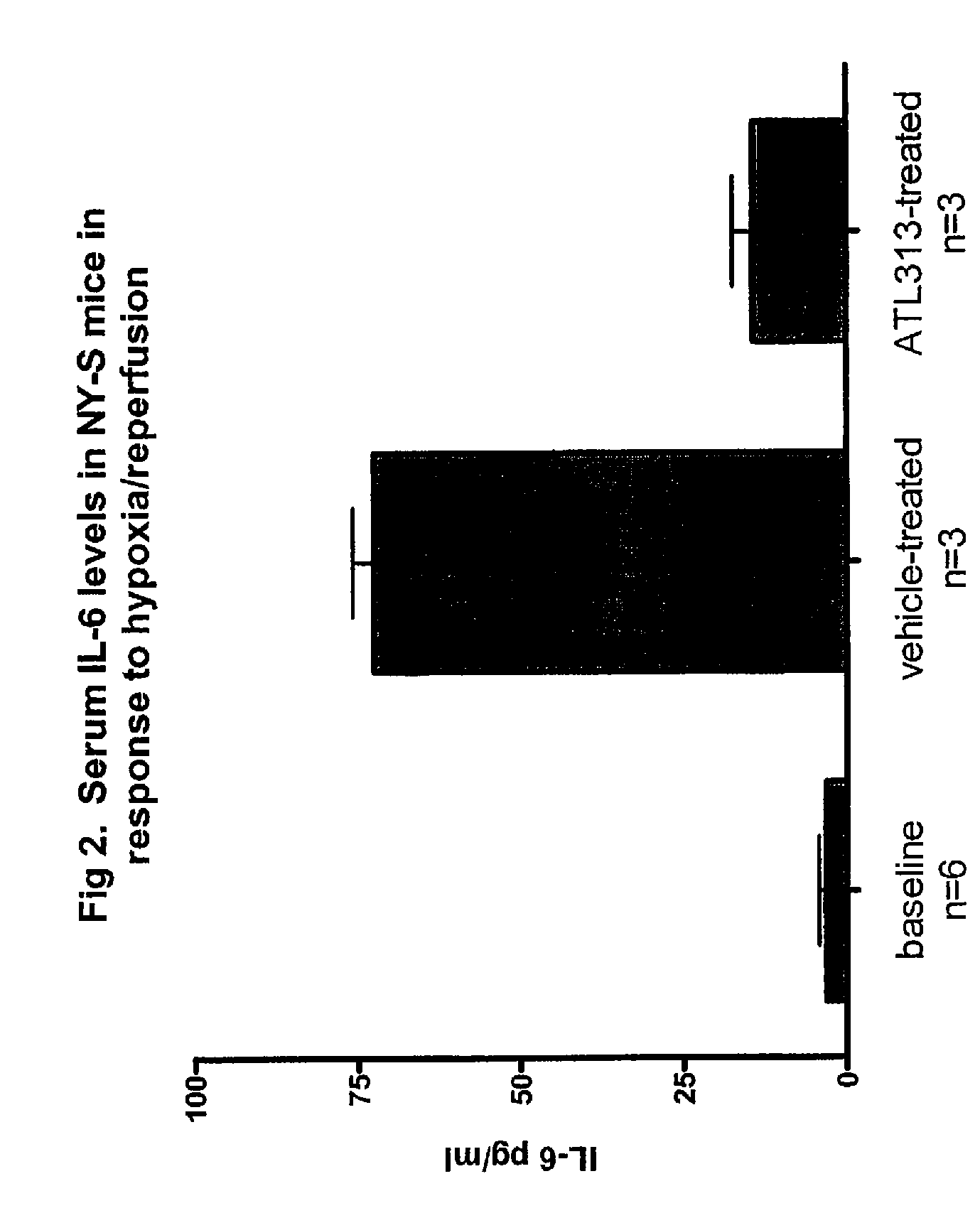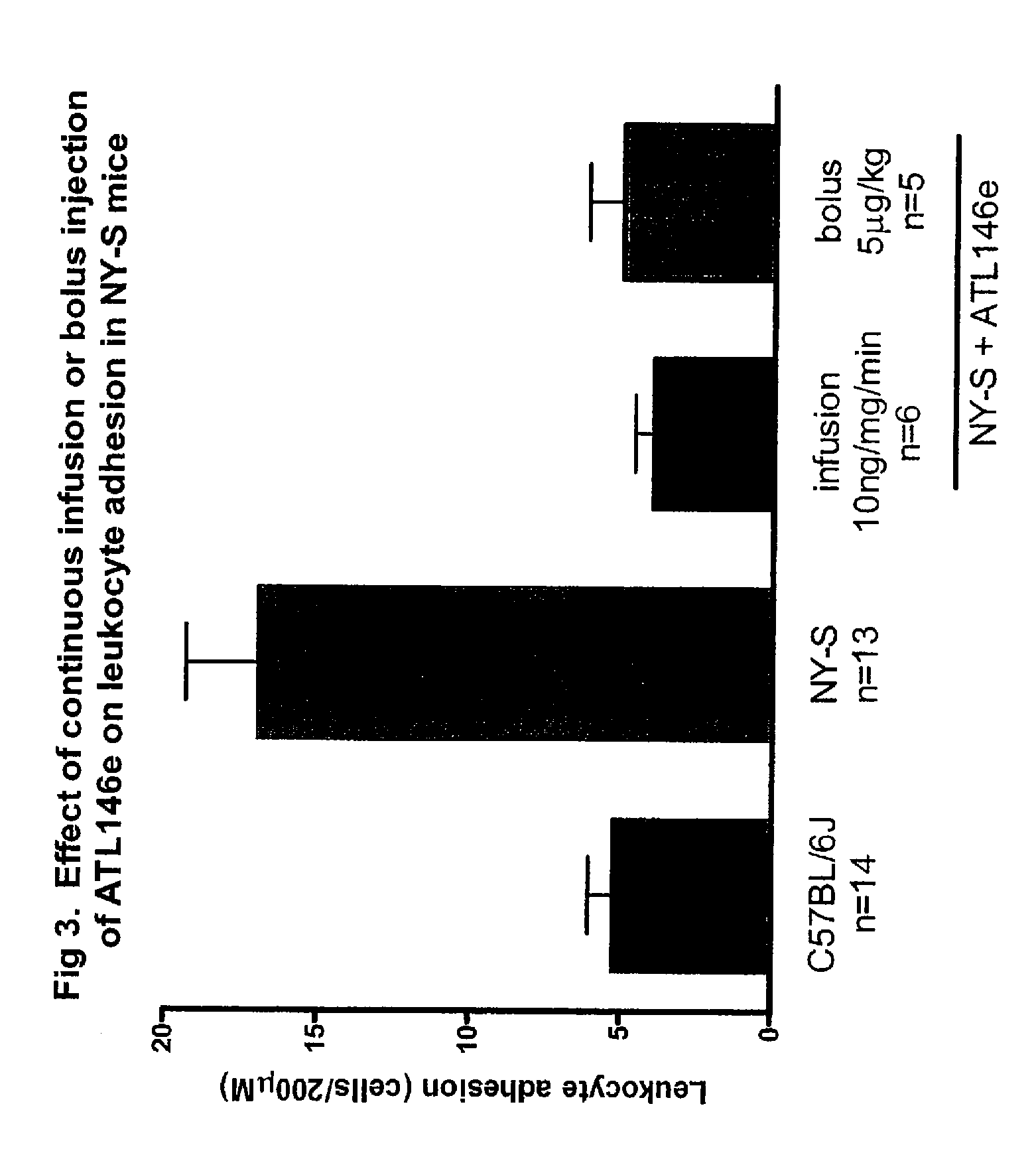Method to treat sickle cell disease
a technology for sickle cell disease and treatment, applied in the field of treatment of sickle cell disease, can solve the problems of acute chest syndrome, renal hypertrophy and isosthenuria, etc., and achieve the effect of reducing inflammation caused autoimmune responses and enhancing the effect of adenosine a2a agonists
- Summary
- Abstract
- Description
- Claims
- Application Information
AI Technical Summary
Benefits of technology
Problems solved by technology
Method used
Image
Examples
examples
Animals
[0268]Several genetic models of SCD have been developed in mice. NY-Sickle mice (NY-S or NY1DD) originally described by Fabry were used. The NY-S mouse is homozygous for a deletion of the murine βmajor-globin gene and expresses the human βS and human α2 globin genes (βHβS[βMDD]). Over 70% of all β-globins expressed in this mouse are expressed as human βS. The NY-S (NY1DD) mouse has been back-crossed onto the C57BL / 6 strain and C57BL / 6 mice are used as experimental controls.
[0269]Cytokine Measurements
[0270]NY-S (NY1DD) mice exhibited an elevated inflammatory state relative to C57BL / 6 control mice. The serum levels of the pro-inflammatory cytokines IL-6 an KC are elevated at baseline in the NY-S (NY1DD) mice (FIG. 1), as are TNF-α, the hematopoietic growth factor G-CSF and the acute phase reactant serum amyloid P-component (not shown).
[0271]Hypoxia / reperfusion injury is a general manifestation of SCD. Since hypoxia is reported to induce an inflammatory response in NY-S (NY1DD) ...
PUM
| Property | Measurement | Unit |
|---|---|---|
| diameters | aaaaa | aaaaa |
| diameters | aaaaa | aaaaa |
| tidal volume | aaaaa | aaaaa |
Abstract
Description
Claims
Application Information
 Login to View More
Login to View More - R&D
- Intellectual Property
- Life Sciences
- Materials
- Tech Scout
- Unparalleled Data Quality
- Higher Quality Content
- 60% Fewer Hallucinations
Browse by: Latest US Patents, China's latest patents, Technical Efficacy Thesaurus, Application Domain, Technology Topic, Popular Technical Reports.
© 2025 PatSnap. All rights reserved.Legal|Privacy policy|Modern Slavery Act Transparency Statement|Sitemap|About US| Contact US: help@patsnap.com



